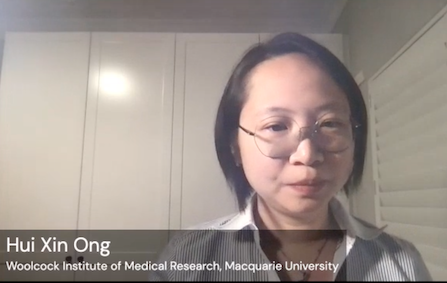Awards
Organizers said that DDL 2021 had one of the highest submission rates for the Pat Burnell Young Investigator Award in years; however, only four finalists were selected to give their presentations at the conference. Those finalists were:
- Mathura Thirugnanasampanthar, McMaster University, “Investigating the Effects of Fluid Composition on Bacterial Aerosol Production”
- Ye Zhang, Woolcock Institute of Medical Research, “An adaptable dual-chamber microfluidic platform to investigate Pseudomonas aeruginosa biofilm growth at the air-liquid interface under controlled hydro and aerodynamic flows”
- Suyash Patil, St. John’s University, “Pulmonary delivery of bedaquiline-loaded cubosomes for non-small cell lung cancer (NSCLC) treatment”
- Hanieh Gholizadeh, Woolcock Institute of Medical Research, “A human nose-on-a-chip as a physiologically relevant in-vitro model for nasal drug delivery”
The final day of the meeting kicked off with the announcement of the winner, chosen by the committee on the basis of scientific content, delivery, how they handled questions, and “the ability to explain their science to a lay person,” Usmani explained. He then announced Mathura Thirugnanasampanthar as the winner of the 2021 Pat Burnell Award, noting that the committee’s decision was unanimous.
Forbes then introduced Hui Xin (YY) Ong of the Woolcock Institute and Ab Initio Pharma as the winner of the 2021 Emerging Scientist Award, which “recognizes significant scientific accomplishment or innovation during the early stages of an individual’s career in inhalation science.” Ong, who was a Pat Burnell Award finalist in 2012, presented a talk reviewing her work on “Advanced Integrated Respiratory Models for Rapid Translation of Inhaled Therapies.”
Asserting that most “normal” in vitro testing of inhaled drugs is not in fact “normal,” with cascade impaction capturing only information related to aerodynamic particle size, Ong said, “Yes, size is one very important consideration, but another important feature to consider is what happens after these aerosols land in the lung.” But conventional in vivo testing of OINDPs is also unsatisfactory, she explained, saying that they “are nowhere near close to being physiologically realistic.”
Ong then described her physiologically relevant air-interface models, which closely mimic the lungs and which are optimized for inhaled pharmaceutical applications. In addition, she said that she and her team have established standards to make the models highly reproducible. Her research includes models for a variety of diseases, including cystic fibrosis, lung cancer, and respiratory infection-specific models, and for a variety of respiratory tract locations, including nasal models as described by Hanieh Gholizadeh during the Pat Burnell session.
Plans for DDL 2022
DDL organizers have announced their intention to return to an in-person meeting at the Edinburgh International Conference Centre in 2022. DDL 2022 will take place December 7, 8, and 9 next year.
Virtual exhibitors at DDL 2021 included:




